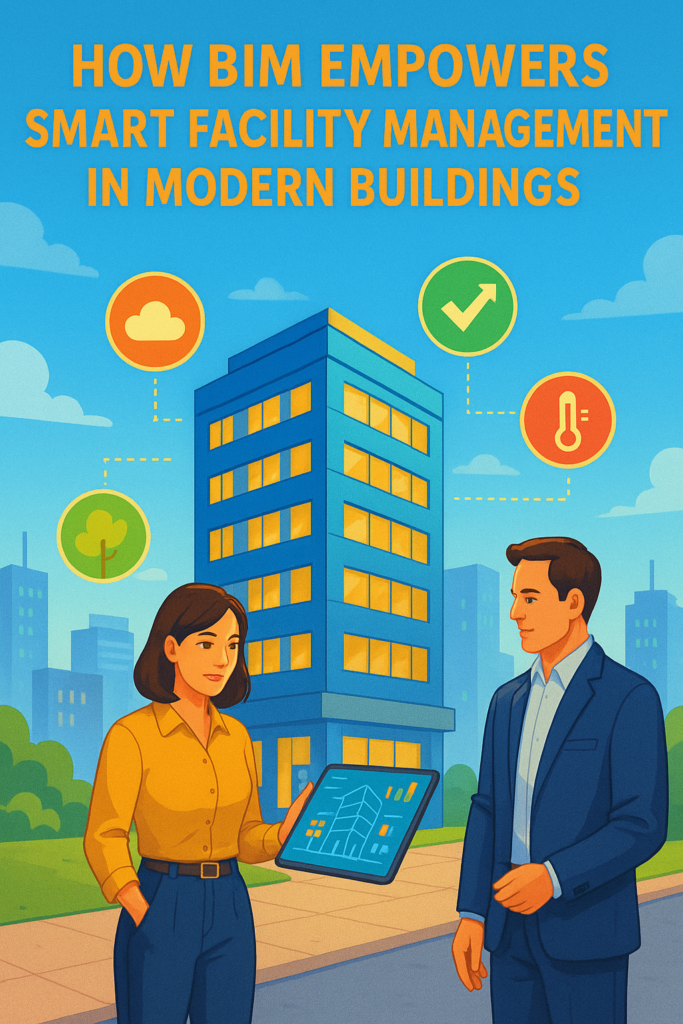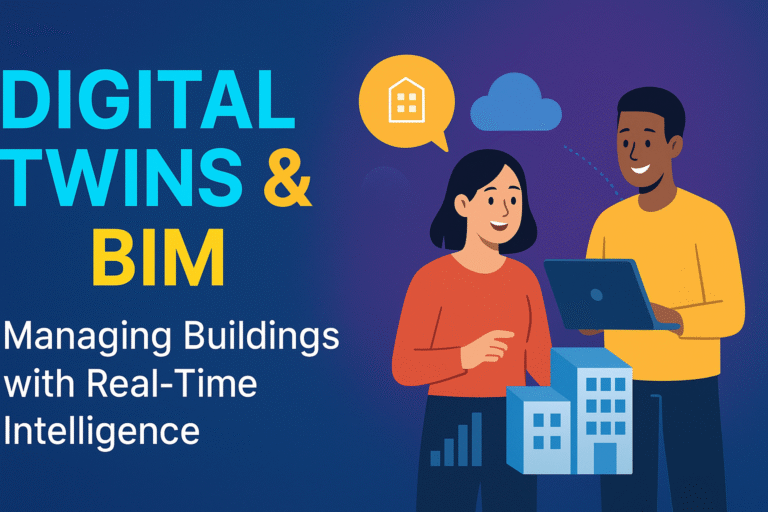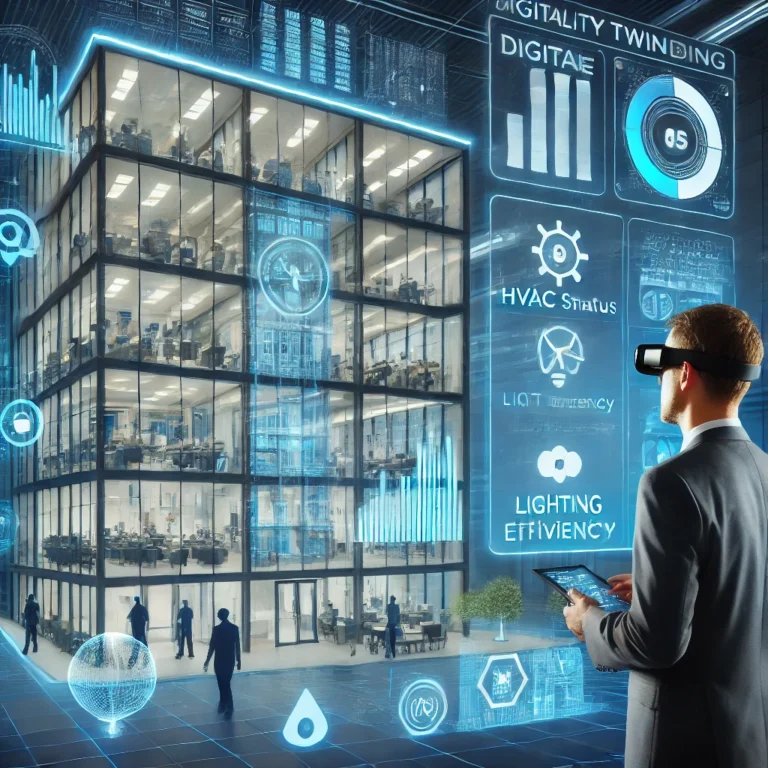
Introduction
Modern buildings are no longer just structures—they are intelligent ecosystems filled with sensors, automation, and data. Building Information Modeling (BIM) now plays a transformative role in Facility Management (FM), turning data into actionable insights for cost savings, sustainability, and occupant satisfaction.
In this post, we explore how BIM is revolutionizing smart building operations, long after construction is complete.
What Is Smart Facility Management?
Smart facility management leverages IoT, automation, and real-time analytics to optimize:
- Energy consumption
- HVAC systems
- Lighting efficiency
- Security and access control
- Space utilization
- Preventive maintenance
With BIM integrated into FM platforms, building managers can access a 3D digital twin of the facility and make informed decisions.
How BIM Helps in Facility Management
1. Real-Time Asset Monitoring
BIM models link directly to real-time sensors embedded in building systems. Facility teams can:
📊 Monitor HVAC, electrical, or plumbing systems
⚠️ Get alerts for equipment malfunctions
🛠️ Schedule preventive maintenance automatically
2. Space Optimization and Occupant Comfort
BIM lets facility managers track space usage and improve comfort by:
🪑 Analyzing occupancy trends
🌡️ Adjusting lighting and temperature automatically
💼 Allocating workspaces dynamically for hybrid teams
3. Maintenance and Lifecycle Planning
With BIM, every element of the building—from elevators to fire alarms—has a data-rich profile.
🔧 Maintenance teams can:
- Access manuals instantly
- Review installation dates
- Track service history
- Schedule replacements in advance
This reduces downtime and extends asset life.
4. Emergency Response and Safety
BIM helps improve emergency preparedness with:
🚪 Clear evacuation maps
🧯 Precise fire suppression locations
📍 Real-time access to safety infrastructure
First responders can use digital twins to plan operations before entering a hazardous site.
Case Study: Smart Facility Management in Action
In London’s King’s Cross Estate, BIM is used to manage:
- Energy consumption across 67 acres
- Waste collection routes
- Water usage and landscaping
📉 This has led to a 25% reduction in energy costs and smoother day-to-day operations.
Challenges in Implementing BIM for FM
🔸 Initial cost and training
🔸 Integration with legacy systems
🔸 Need for continuous data updates
💡 Solution: Cloud-based platforms and training are now making BIM easier to adopt for FM teams worldwide.
Conclusion
BIM empowers facility managers with the digital intelligence needed to keep modern buildings efficient, sustainable, and responsive.
In the age of smart cities and connected infrastructure, BIM is the backbone of intelligent facility management.
✅ Quick Summary for Social Sharing:
“BIM isn’t just for architects—it’s transforming how buildings are managed daily. Learn how digital twins, IoT, and smart analytics are changing facility management.”
📢 Do you work in facilities or smart buildings? Share your experience in the comments!




